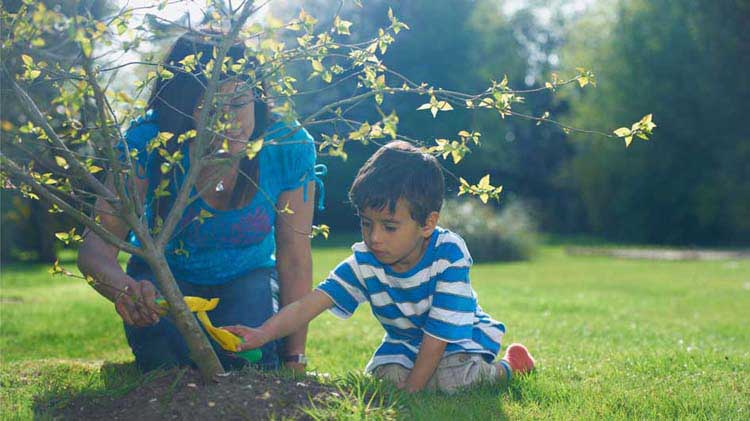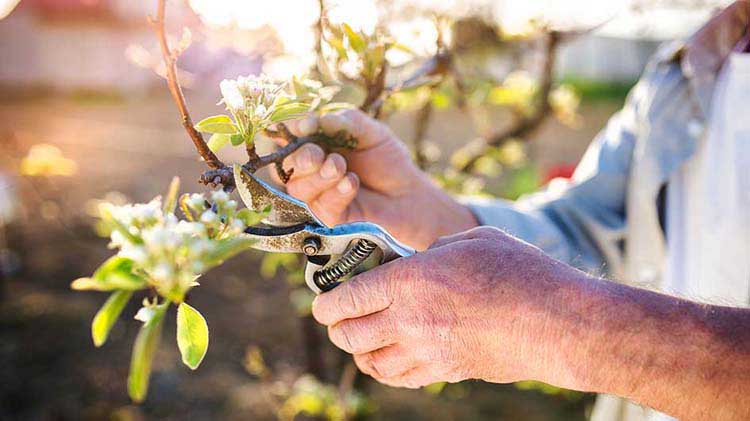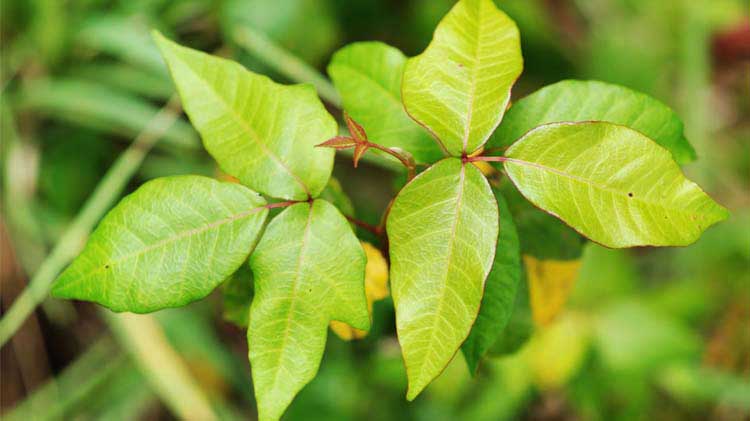Help save trees from the emerald ash borer
The emerald ash borer is responsible for the destruction of millions of trees. Learn how to spot an infested ash tree.
Though the emerald ash borer (EAB) may sound like an imaginary creature, the risk it poses to trees is all too real. There are some steps you can take to help contain its spread and prevent the insect from causing lasting harm to your property.
Emerald ash borer facts
The emerald ash borer is an Asian beetle that has infested ash trees in the northern United States. The beetles feed on — and eventually kill — the trees they inhabit. If you have an ash tree in your yard, take precautions to help keep it safe by learning how to identify emerald ash borer damage. (A dying tree can shed limbs and harm your property or your family.)
Emerald ash borers were first discovered in North America in southeast Michigan in 2002. The hardy beetle has since spread east to Massachusetts and west to Colorado, in part due to people transporting infested trees or wood to non-infested areas.
Typically ranging from just under ten to approximately thirteen millimeters, the vast majority of EABs have predominantly green carapaces, ranging from metallic to emerald green in color. In addition to the green body, the outer coloration can include red, often described as brass or copper. And while very rare, there have also been sightings of EABs that are an entirely red, copper color. Luckily there's a handy way to identify this insect no matter what color it displays on the outside. On the upper side of the abdomen, underneath the wings, the abdomen is a deep, shiny red color, also typically described as coppery. Usually, this is only viewable if the wings are raised, so you may need to wait for one to take flight to identify it, but the emerald ash borer is the only insect of its species (Agrilus) in North America to have this distinctly red abdominal section.
Emerald ash borer damage
Emerald ash borer larvae hatch on ash tree bark and then burrow into the tree to feed on it. Usually laid near the crown of the tree, emerald ash borer eggs are reddish-brown and usually around 1mm (0.04 inches). This invasion disrupts the tree's nutrition system, which eventually kills it. Be cautious around any trees you suspect are infested with EABs, as a dying tree can shed limbs which could potentially harm you, your family or your property.
Early detection can be difficult but is key to preventing spread. You can start identifying signs of emerald ash borer damage by learning the general warning signs of a sick or dying tree. Some common signs of EAB damage include:
- Woodpecker holes
- Bark loss
- Leaves thinning at the top of the canopy (progressing downward as beetles consume the tree)
- Vertical splits in the bark, indicating that larvae are feeding underneath
In addition to the signs listed above, it’s important to note that adult emerald ash borers leave D-shaped holes when they exit a tree. If you’re worried about a possible EAB infestation, consider reading an emerald ash borer identification guide to help you decipher the signs.
Emerald ash borer treatment
Prevention is an effective way to help keep your tree healthy. The first step is to have your tree inspected by a professional who can determine if there are any other conditions that should also be addressed.
There are four types of treatment for emerald ash borers, all of which are typically applied during the spring for maximum effect:
- Soil injection: One of the two most common treatments, soil injection refers to the application of insecticides just below the roots of the tree, allowing it to be carried up the roots and eventually throughout the tree.
- Trunk injection: The second commonly used treatment, trunk injection refers to a treatment in which insecticides are injected directly into the trunk of the tree to begin removing the infestation. This can be especially useful in cases where soil is either unavailable or difficult to access.
- Bark spray: This treatment can be a simple and effective method as it requires less direct intervention than injection methods. Bark spray doesn’t require the advanced equipment or expertise of a professional so it can be applied by a homeowner as soon as the infection is identified. Applied to the bark of the tree, it permeates the bark and brings it to the center of the trunk.
- Canopy spray: Targeting the canopy at the top of the tree, canopy spray refers to a treatment method in which aerosolized insecticide is sprayed over the canopy of the affected tree. It can be helpful if EABs have taken up residence near the top of your tree. However, this method’s effectiveness is affected by factors like air drift, allowing for less control over the chemical and less precision in applying it. In conjunction with regular tree trimming, you may find it helpful in protecting the upper part of your tree.
There are also DIY treatments for emerald ash borers. It's critical, however, to choose a product with a high enough concentration and to apply it at the correct dose and timing.
Keep or cut: Determining if an ash tree can be saved
While we would all generally like to conserve our trees, it is not always feasible or prudent to do so. At those times, cutting down an ash tree may be the best course of action. Regarding an EAB infestation, the tree's health plays a major role in the determination.
Step one is assessing your tree. If the tree has lost more than half of its leaves because of the infestation, the USDA Forest Service suggests it's likely better off being removed. But if the tree is still healthy and retains the majority of its canopy, making treatment preparations could be just what it needs for a full recovery.
But that’s just considering the tree’s condition itself. You may also need to make more fiscal considerations like how much it will cost to have the tree removed, the cost of treatment, and more abstract considerations like the tree’s sentimental value or its aesthetic effect on the surrounding area. Whether or not you decide to proceed with removing it, you may find these tips for tree trimming helpful for resizing or simply keeping the branches manageable!
Emerald ash borer map
Using an emerald ash borer map, you can learn if the emerald ash borer beetle has been detected in your area. If you suspect a nearby infestation, insecticides can help protect trees on your property. However, you might consider cutting down infested trees and then having them burned or buried.
States are working to quarantine areas of infested ash trees. You can help prevent the spread by keeping infested wood out of non-infested areas. Beyond that, keeping a close eye on your trees — and knowing what to look out for — is a useful way to help prevent the spread of the emerald ash borer.




